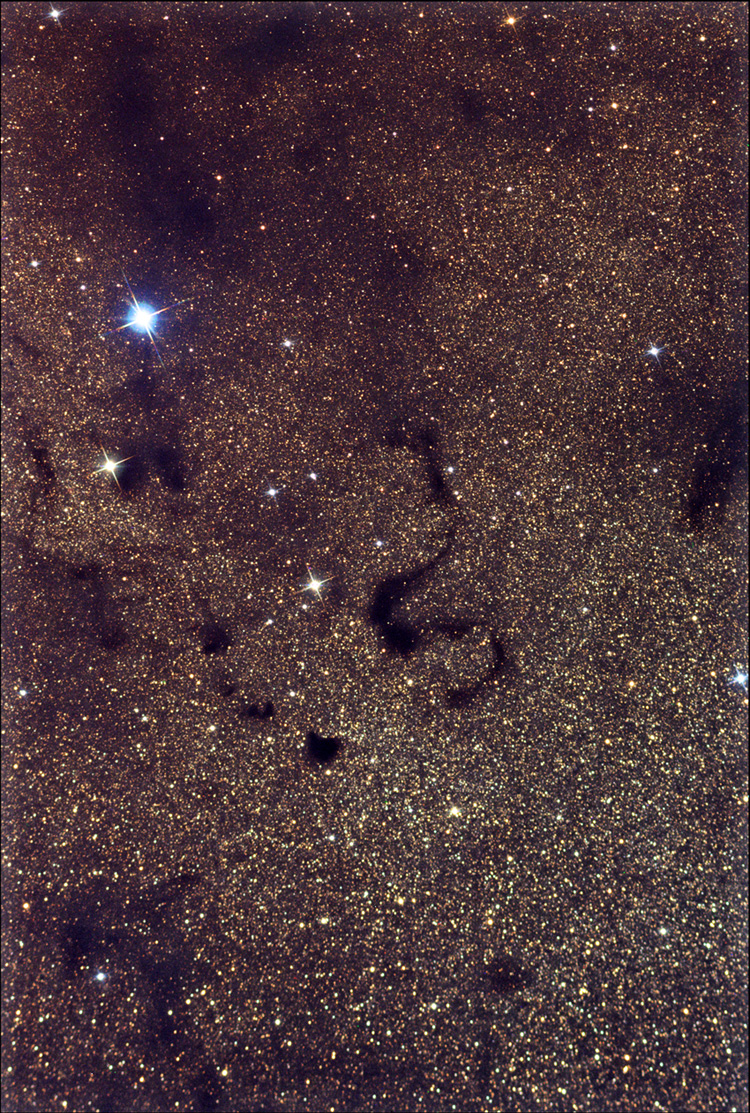[/caption]
If you’ve been out at night, when the air is clear, the Moon is on the other side of the world, and city lights are far, far away, you’ve almost certainly seen a dark nebula or two. In the southern hemisphere, you’ll have seen the Coalsack; anywhere in the world, the Great Rift, that divides much of the Milky Way in two.
And that’s the distinguishing feature of a dark nebula – it’s only dark because it’s surrounded by brighter parts of the sky, whether a great swathe of the Milky Way (stars and emission nebulae), or just a part of an emission nebula (the Horsehead Nebula is perhaps the most famous of this kind), or something in between.
In fact, in some cultures, it’s patterns of dark nebulae which make up the memorable sky, like the Emu in the Sky of many of the Australian aboriginal tribes.
Dark nebulae are dark principally because they contain dust, which is interstellar grains a few microns across (actually, their sizes range from a few tens of nanometers to millimeters), mostly dirty graphite, various ices (or icy mixtures), various silicates, some carbon-based goo, and mixtures of these. Most dark nebulae are associated with, or part of, giant molecular clouds, which are perhaps the most distinct phase of the interstellar medium; they can have masses up to a million sols and measure up to a few parsecs across. In shape, dark nebulae come in a bewildering range, from amorphous blobs, to almost round disks, to sinuous snake-like things, to what look like negative clouds.
When we see a spiral galaxy on its side (or nearly so), it’s often split by a dust lane, or nearly so … which is just all the dark nebulae in the disk of that galaxy viewed (nearly) edge on; M64, M65, M104, and NGC 891 are good examples.
Universe Today, as you’d expect, has many articles and stories on this dark nebula or that, and on dark nebulae in general; for example, Astronomers Predict Birth of a New Star, Dark Knight Ahead – B33 by Gordon Haynes, and Planck Reveals Giant Dust Structures in our Local Neighborhood, to mention just a few.
More to explore: LDN – Lynds Catalog of Dark Nebulae (the name says it all), NASA’s Photo Gallery of Nebulae, and Dark Nebulae (Atlas of the Universe).
Astronomy Cast’s Dust episode goes into detail on the relationship between the dark nebulae we see and what’s really there – check it out!

